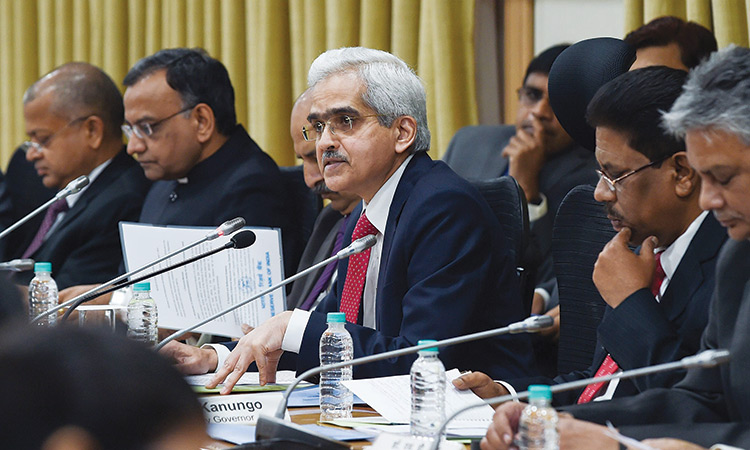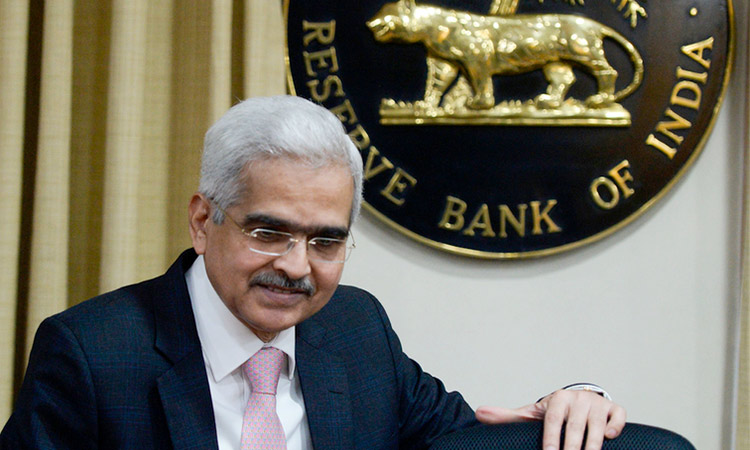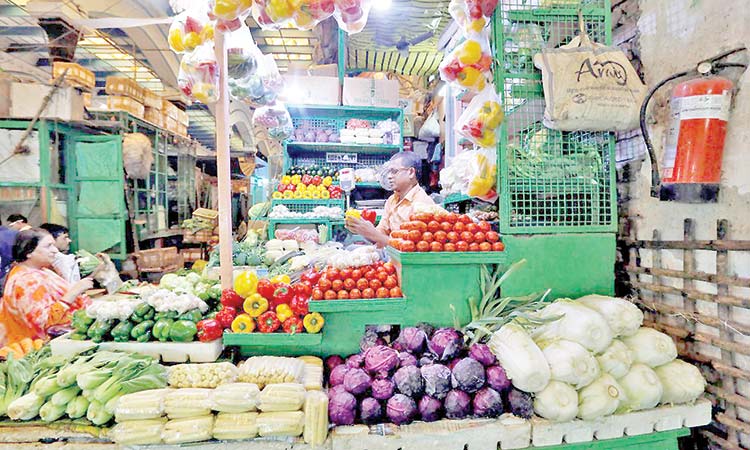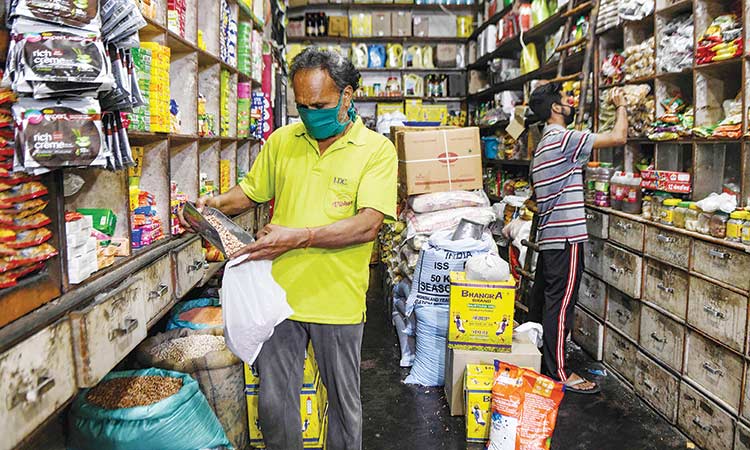Retail loans lending fraught with risks, RBI warns banks

Shaktikanta Das (centre) speaks during a press conference at the RBI headquarters in Mumbai. File/Agence France-Presse
The RBI’s ‘Trend and Progress of Banking in India 2018-19’ report, released on Tuesday, said in the event of demand for credit slowing down from the corporate sector, the retail segment saw a surge in lending. “The slowdown in consumption and overall economic growth may affect the demand for and the quality of retail loans,” it said.
“The bad loan overhang remains in the banking segment even as the resolutions under the IBC framework have seen an improvement. Issues like resolution of stressed assets, governance, fraud needs to be addressed,” it said.
Earlier this month, the six-member Monetary Policy Committee (MPC) of RBI surprised markets by deciding to hold the repo rate steady at 5.15 per cent, citing high inflation. The MPC, headed by RBI Governor Shaktikanta Das, preferred to wait and watch for the previous rate cuts to trickle through before easing further.
The health of banking industry depends on a turnaround in the macroeconomic conditions. Due to defaults and rating cuts, formal lending to NBFCs declined, the central bank said while offering ways to address the stress in the NBFC sector.
“In order to strengthen the liquidity framework for Non Banking Financial Companies (NBFCs), a liquidity coverage ratio (LCR) has been introduced for all deposit-taking NBFCs (NBFCs-D) and non-deposit taking NBFCs (NBFCs-ND) with an asset size of Rs5,000 crore,” it said.
On recapitalisation of PSBs, it said the deferment of the implementation of the last tranche of the Capital Conservation Buffer (CCB) till March 31, 2020 has offered some breathing space to these banks. Their capacity to sustain credit growth in consonance with the financing requirements of the economy will, however, warrant that capital is maintained well above the regulatory minimum, providing these banks confidence to assume risk and to lend.
The financial health of public sector banks (PSBs) should increasingly be assessed by their ability to access capital markets without excessive dependence on the government, the RBI said.
The central bank said that the government has been infusing capital in some PSBs, just enough to meet the regulatory minimum including capital conservation buffer (CCB).
That apart, the deferment of the implementation of the last tranche of CCB till March 31, 2020 has offered some breathing space to these banks, said RBI.
“Going forward, the financial health of PSBs should increasingly be assessed by their ability to access capital markets rather than looking at the government as a recapitaliser of the first and last resort,” it said.
The RBI said that PSBs led the recovery in capital ratios for the banking sector in 2018-19. They were recapitalised with Rs90,000 crore in FY18 and another Rs 1.06 trillion was infused into these banks in FY19. This bolstered their capital position, even as they battled with the overhang of impaired assets.
Private banks (PVBs) and foreign banks (FBs) remained well-capitalised and above the regulatory minimum of 10.875 per cent in March 2019. However, private banks experienced a marginal decline in capital adequacy ratio in 2018-19 after the reclassification of IDBI Bank as a private bank.
According to the report, 2018-19 marked a turnaround taking shape in the financial performance of India’s commercial banking sector.
“After seven years of deterioration, the overhang of stressed assets declined and fresh slippages were arrested. With the concomitant reduction in provisioning requirements, bottom lines improved modestly after prolonged stress and the banking sector returned to profitability after a gap of two years in the first half of FY20,” it said.
The banking sector has showed improvement with the gross non-performing assets (GNPA) ratio of Scheduled Commercial Banks (SCBs) declining from 11.2 per cent in March 2018 to 9.1 per cent in March 2019 and a return to profitability in H1 of 2019-20, according to the report.
As the bad loan recognition process nears completion, gross non-performing loans of banks improved to 9.1 per cent as of end-September 2019, compared to 11.2 per cent in FY18.
Net non-performing assets (NPAs) of all commercial banks reduced to 3.7 per cent in FY19 as against 6 per cent in FY18. “The gross NPA ratio of all banks declined in FY19 after rising for seven consecutive years, as recognition of bad loans neared completion,” the report said.
During 2018-19, the asset quality of scheduled commercial banks turned around after a gap of seven years. With a concomitant reduction in provisioning requirements, the banking sector returned to profitability in the first half of 2019-20, while recapitalisation helped public sector banks in shoring up their capital ratios.
Indo-Asian News Service







